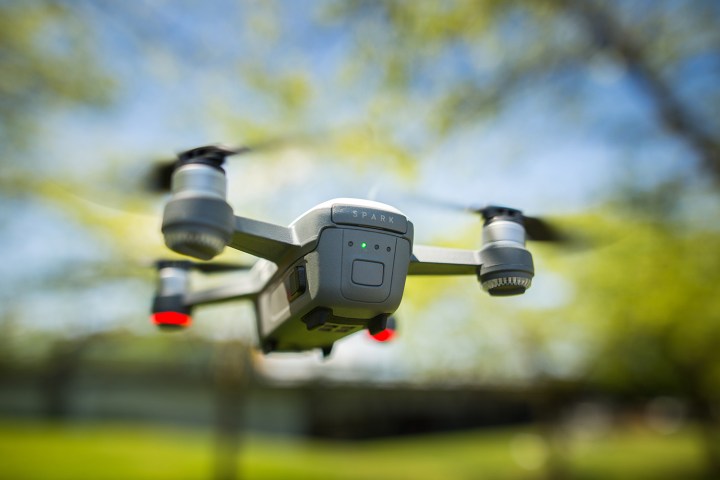Whether you’re heading out on a month-long backpacking excursion or simply taking the family to local campground for the weekend, you likely don’t want to be bogged down with too much camera gear. You could always stick with your smartphone, but if you want to up your photography game and move to a real camera, we’d recommend looking at a compact mirrorless model). These cameras offer a great balance between image quality and size — especially when paired with the right lens — and are therefore perfect for camping. Once you’ve got the camera figured out, take a look below for some ideas on how to spice up your outdoor adventures with a few accessories.
LensCoat RainCoat RS Medium

For weather protection, a rain cover for your camera is never a bad idea. This is the type of camera accessory that every outdoor photographer should keep in their bag. While we singled out the LensCoat RainCoat here (we like its design and multiple colors and camouflage patterns you can choose from) there are many others on the market. The medium size listed here can handle cameras and lens combinations up to 15 inches long, which is probably enough for most users, but LensCoat also makes a 21-inch version and a 10-inch one.
If you don’t get out to shoot all that often but want to make sure you are ready for a little rain when you do, you can save money with with the Op/Tech Rainsleeve. Essentially a plastic bag for your camera, the Rainsleeve is designed for limited use and likely won’t hold up to repeated wear and tear. However, you do get two of them in a package.
DJI Spark

Okay, so the DJI Spark isn’t so much a camera accessory as it is, well, an entire camera. But this downsized, simplified drone makes aerial photography and video more approachable than ever. The Spark is loaded with features that make using it simple and intuitive, including an integrated two-axis gimbal for smooth and level footage, as well as an obstacle avoidance system that’s designed keep you out of the trees.
You can also operate the drone controller-free — no smartphone or gamepad-style device required (though you can use those, too). Simply hold the Spark at arm’s length and give the camera time to scan your face. Once it recognizes you as human being and senses it’s safe to fly, it will rev up the propellers and take off. All you you need to do now hold your hand in front of the drone and it will follow your every command, moving wherever you move your hand. You can even make a picture frame shape with your thumbs and forefingers to prompt the drone to snap a photo.
The Spark isn’t the smallest drone out there, but its robust feature set and longer, 16-minute flight time easily makes up for its frame, which is large compared to the ZeroTech Dobby, Hover Camera Passport, Yuneec Breeze, and other like-minded drones.
Per usual, it’s a good idea to check with the park or campground you’re staying at before you launch a drone. Some locations have no restrictions, while others may prohibit the flying of drones completely.
Lowepro Flipside Trek 250 AW

Another simple yet important camera accessory is the bag that will hold all of your gear and protect it from the elements. When it comes to the great outdoors, there’s no telling how many threats you and your gear may face, whether it be bad weather or bears. While the Lowepro Flipside Trek series of backpacks will do little to fend off an enraged grizzly, it will at least help you endure bad weather.
Lowepro makes three versions of the Flipside Trek: The 250 AW, 350 AW, and 450 AW. The one that works best for you depends on how much gear you need to carry, but we recommend the smallest of the three. The 250 AW has enough room for a mirrorless camera or compact DSLR, plus one or two additional lenses (depending on lens size). The upper compartment also has plenty of room for equally important items — namely, snacks. And should you encounter a freak rainstorm, just pull out the built-in waterproof cover.
Like Lowepro’s other Flipside bags, the camera compartment on the Flipside Trek is accessible from the back, so it can’t be opened while the pack is against your back. You can access your gear without removing the bag, however, by swinging it around on the hip belt to your front. And if you set the bag down on the ground to open it, the surface that normally touches your back will remain off the ground, helping to keep you clean and dry.
DJI Osmo Mobile 3

DJI may be better known for its drones, but the same gimbal technology that stabilizes the company’s high-flying cameras can be put to equally effective use on the ground. The Osmo Mobile 3 is essentially a three-axis gimbal with a handle attached. It features a mount that can support just about any smartphone, producing super-smooth video from the imaging device that everyone on your camping trip already has. It even allows for vertical video orientation, so all your Snapchat and Instagram stories will look perfect.
However, the Osmo Mobile isn’t just about stabilizing video. With the DJI Go app, you’ll gain access to a world of imaging opportunities, including time-lapse photography, automated panning, and even object tracking.
This is one of the most affordable gimbals on the market, but it can make your next adventure video look like a professional production.

